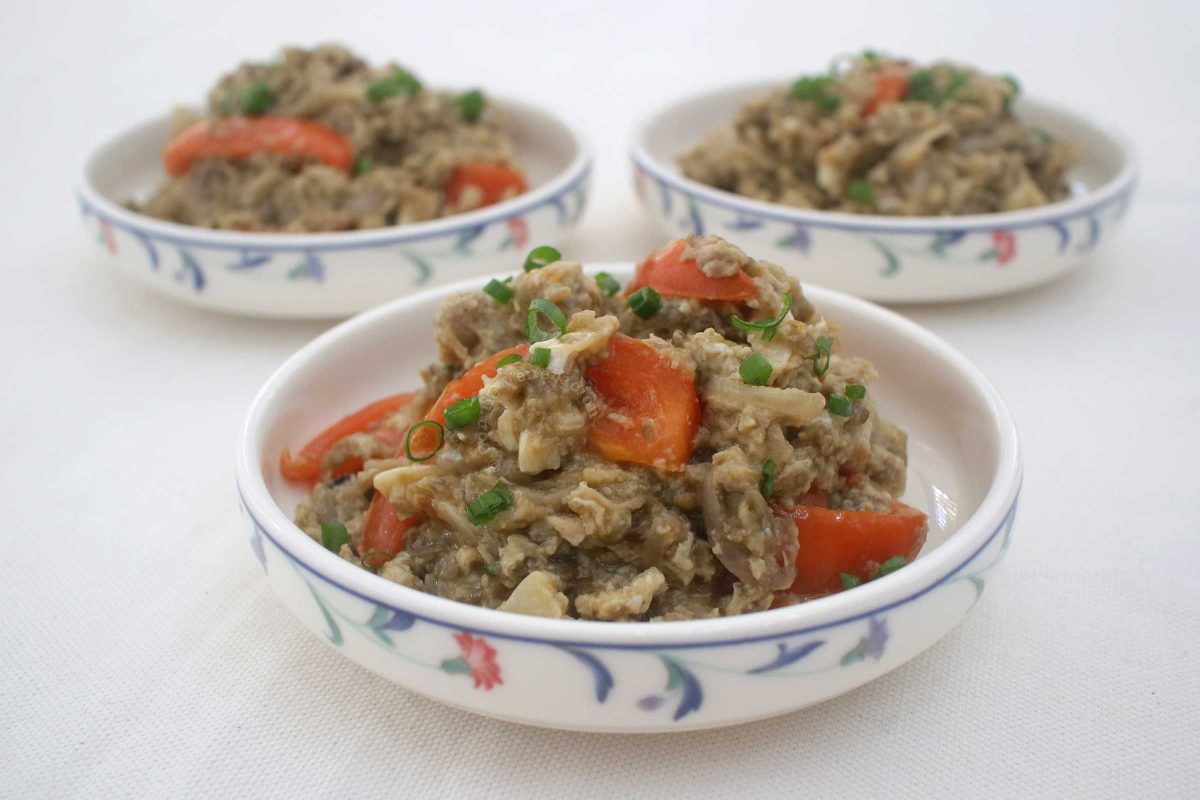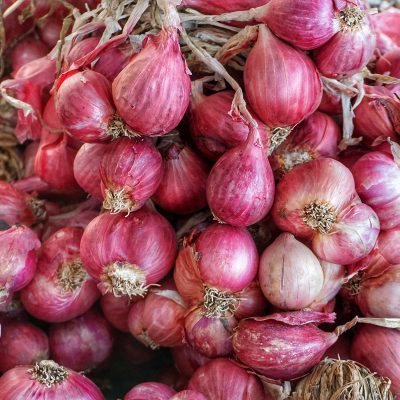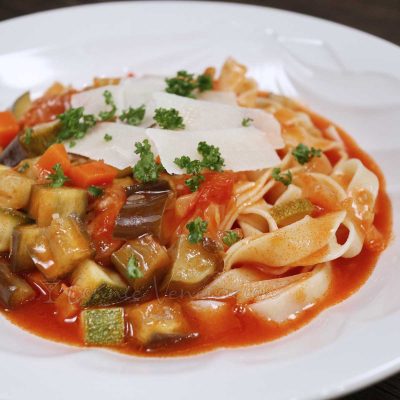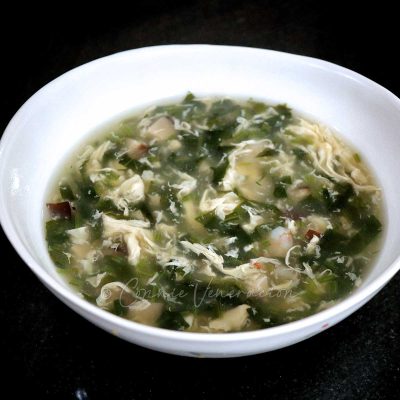Set aside the naughty thoughts about why this dish is called poqui-poqui. The history of the name is more interesting than you might think.
… according to Chita Sanculi of Divine Word College in Ilocos Sur, poqui poqui’s name origin can be traced back to the ’80s. Around that time, many Filipinos migrated to Hawaii to plant pineapples. The word “poki” in Hawaii means “to cut up” or “mash.”
Source
In name, therefore, poqui-poqui is related to poke bowl. But just in name.
Granted that it’s not the best-looking vegetable dish in the world. But, oh man, it sure is one of the tastiest meatless dishes I have tried—and I have tried a lot. It may be a simple dish but “deceptively simple” might be the more appropriate phrase to use to describe how it is cooked. But even before the cooking, there’s the matter of the ingredients.
Asian eggplant, the long and narrow kind, is a must. Sweet with no bitterness, the texture after cooking is best described as rather creamy.
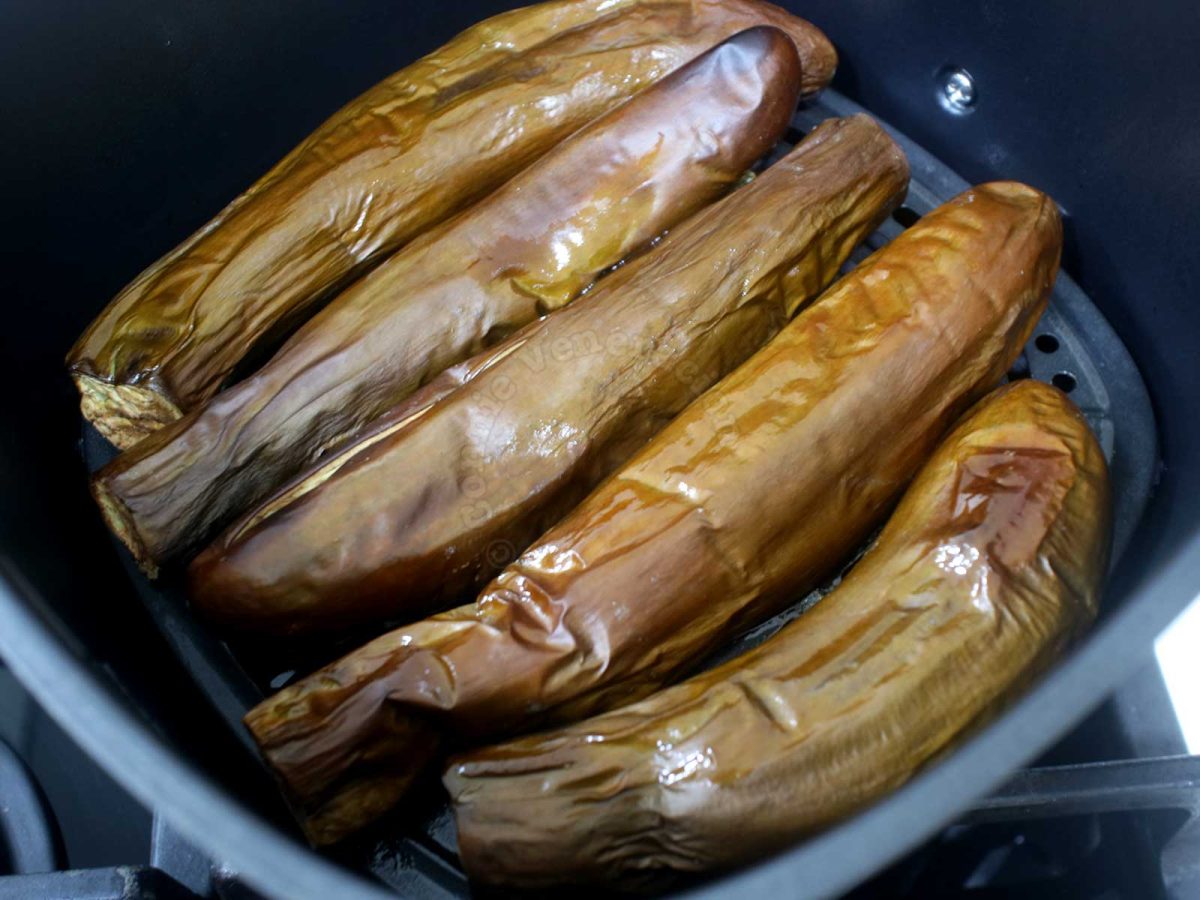
The eggplants need to be fully cooked before they are thrown into the frying pan. Grilling them is traditional. You can do this in any number of ways:
- by placing a rack on a gas stove and roasting them over the fire, turning the eggplants occasionally for even cooking
- by roasting them in the oven or
- by air-frying them.
We prefer air-frying. Less messy. The eggplants cook evenly and, unlike roasting in the oven, there is no preheating involved. No preheating means lower power consumption and the room temperature in your kitchen won’t shoot up while the oven is on.
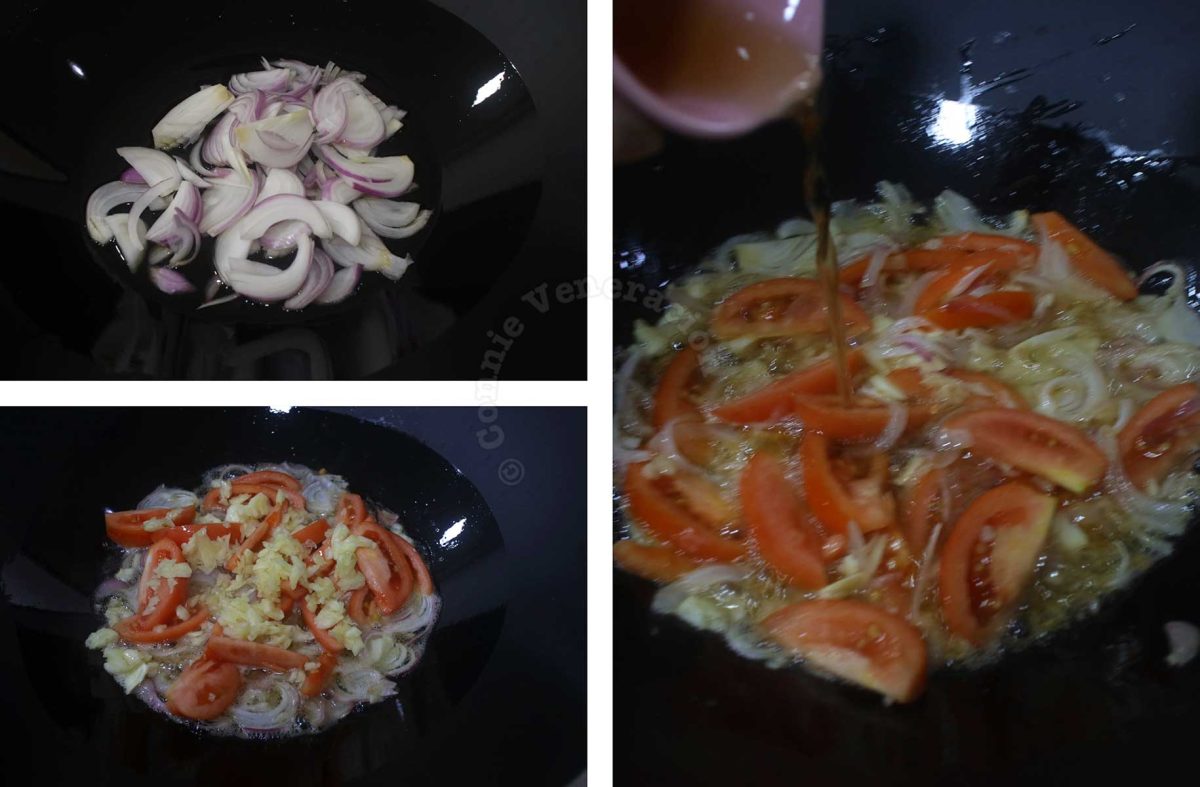
Now, the spices that give this dish its distinctive taste and aroma. Don’t worry too much about the tomatoes. Any plump and juicy tomato will work. It’s an not an ingredient that makes or breaks the dish.
What you need to pay attention to is the shallots and garlic. Shallots, not just any onion. And, especially, not white or yellow onion. If you need more information about shallots, see the linked post below.
Scallion, spring onion, leek and shallot: how to differentiate
Spring onion leaves look like scallions but they are not the same. Leeks look like large scallions but it’s a different vegetable. Shallots aren’t simply small onions. Confused? Read on.
If you can’t get shallots, small red onions are okay to use although the flavor will be a bit bland.
Garlic is a traditional argricultural product of the Ilocos region. Native garlics are small, about an inch and a half in diameter, and the flavor is extremely bold. That is the preferred garlic for this dish. If you can’t get them and you have to use a large head of garlic which is bland compared to the flavor of Ilocos garlic, double the amount to do justice to poqui-poqui.
The seasonings are simple enough. You need black pepper and something to add saltiness to the dish. Choose fish sauce over salt. It makes a world of difference.
The cooking method is easy but not quick. Start by sauteeing the shallots over medium-low heat. When they start to soften, add the garlic and tomatoes, drizzle in your fish sauce, sprinkle in pepper, and continue sauteeing for another minute.
Why not start by sauteeing the garlic? Because garlic burns fast. And those tiny bits will be burnt before the shallot slices soften if you add them to the hot oil first.
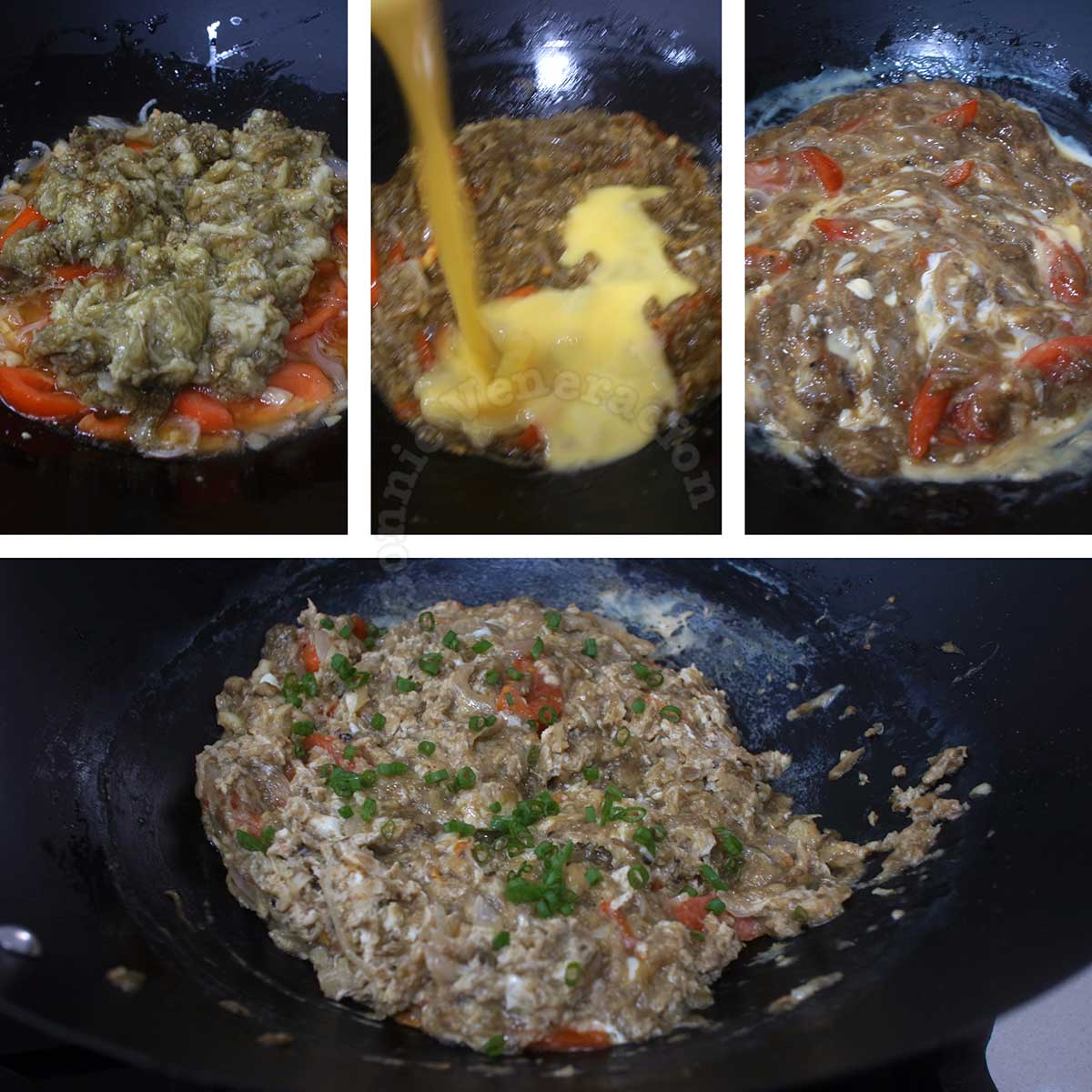
Add the eggplants (I scrape off the flesh and discard the skins) and continue cooking with occasional stirring until the mixture is quite dry. This is important so that the poqui-poqui is not soupy by the time it reaches the dining table.
Pour beaten eggs in a circular motion. Allow to set for half a minute before stirring the eggs into the eggplants. Do this slowly so that the eggs are evenly distributed.
What’s the ideal proportion between the number of eggs and the amount of eggplants? Now, that is a matter of personal preference. I used three large eggs and five eggplants. Yes, just three. I prefer my poqui-poqui to taste more of eggplants than eggs.
Poqui-poqui
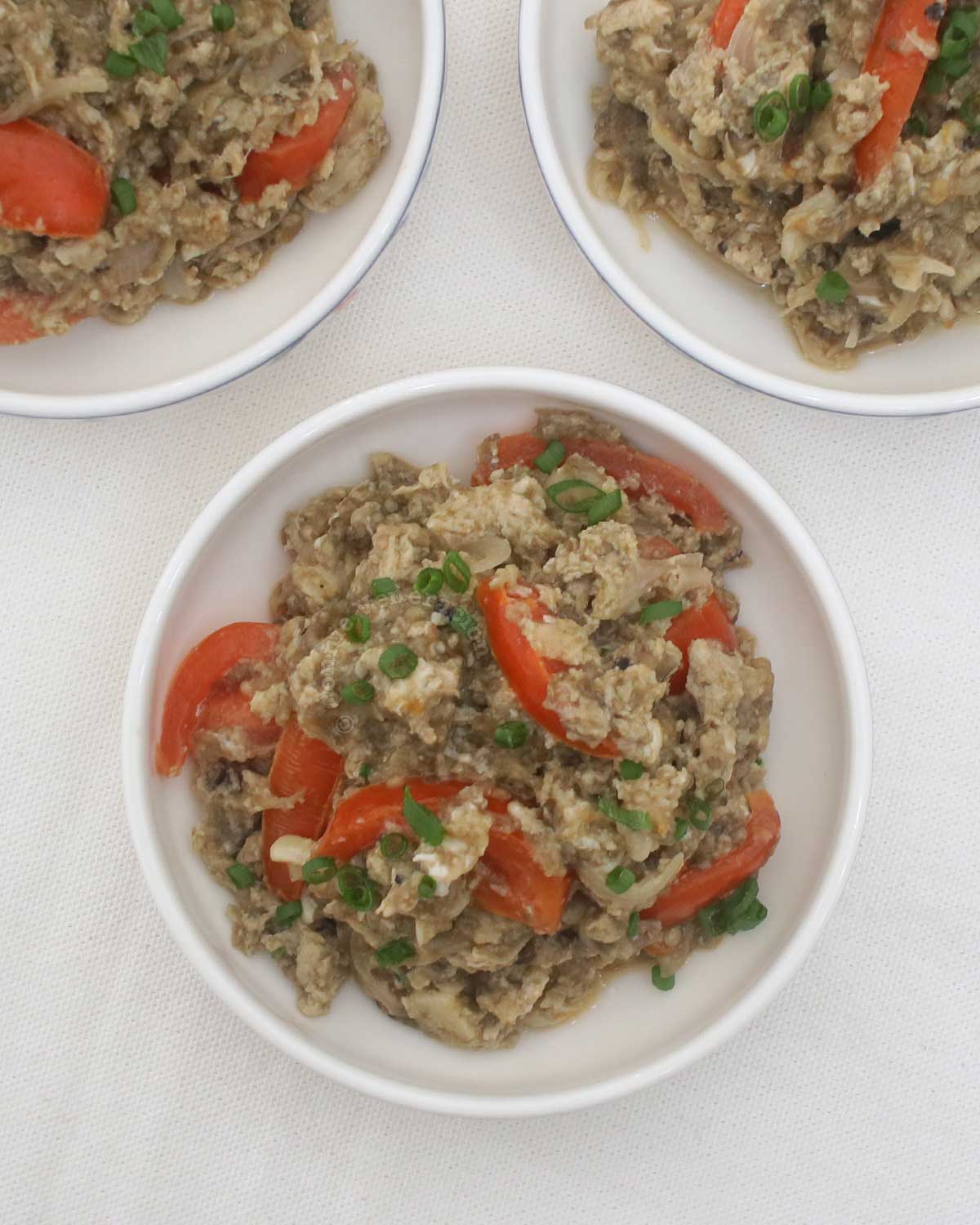
Ingredients
- 4 to 5 Asian eggplants roasted
- 3 tablespoons cooking oil
- 4 shallots peeled and thinly sliced
- 2 heaping tablespoons crushed garlic
- 2 to 3 plump tomatoes halved and sliced
- 2 tablespoons fish sauce you may need more
- ½ teaspoon pepper to taste
- 3 large eggs lightly beaten
Instructions
- Open up the eggplants (the slit skin should make this easier) and scrape off the flesh. Discard the skins.
- Roughly chop the eggplant flesh and set aside.
- Heat the cooking oil in a wok or frying pan.
- Saute the shallots over medium-low heat until softened.
- Add the garlic and tomatoes, drizzle in the fish sauce and sprinkle in the pepper.
- Continue sauteeing for about a minute or just until the tomato slices are starting to soften.
- Dump in the chopped eggplant flesh. Cook, stirring occasionally, until the mixture is quite dry.
- Pour the beaten eggs over the eggplants in a circular motion and leave without disturbing for half a minute.
- Stir the eggs into the eggplants slowly until evenly distributed and cooked through.
- Taste your poqui-poqui. Add more fish sauce, or pepper, or both to get the flavor balance that pleases your taste buds.

